Day 4: Rachael’s Version
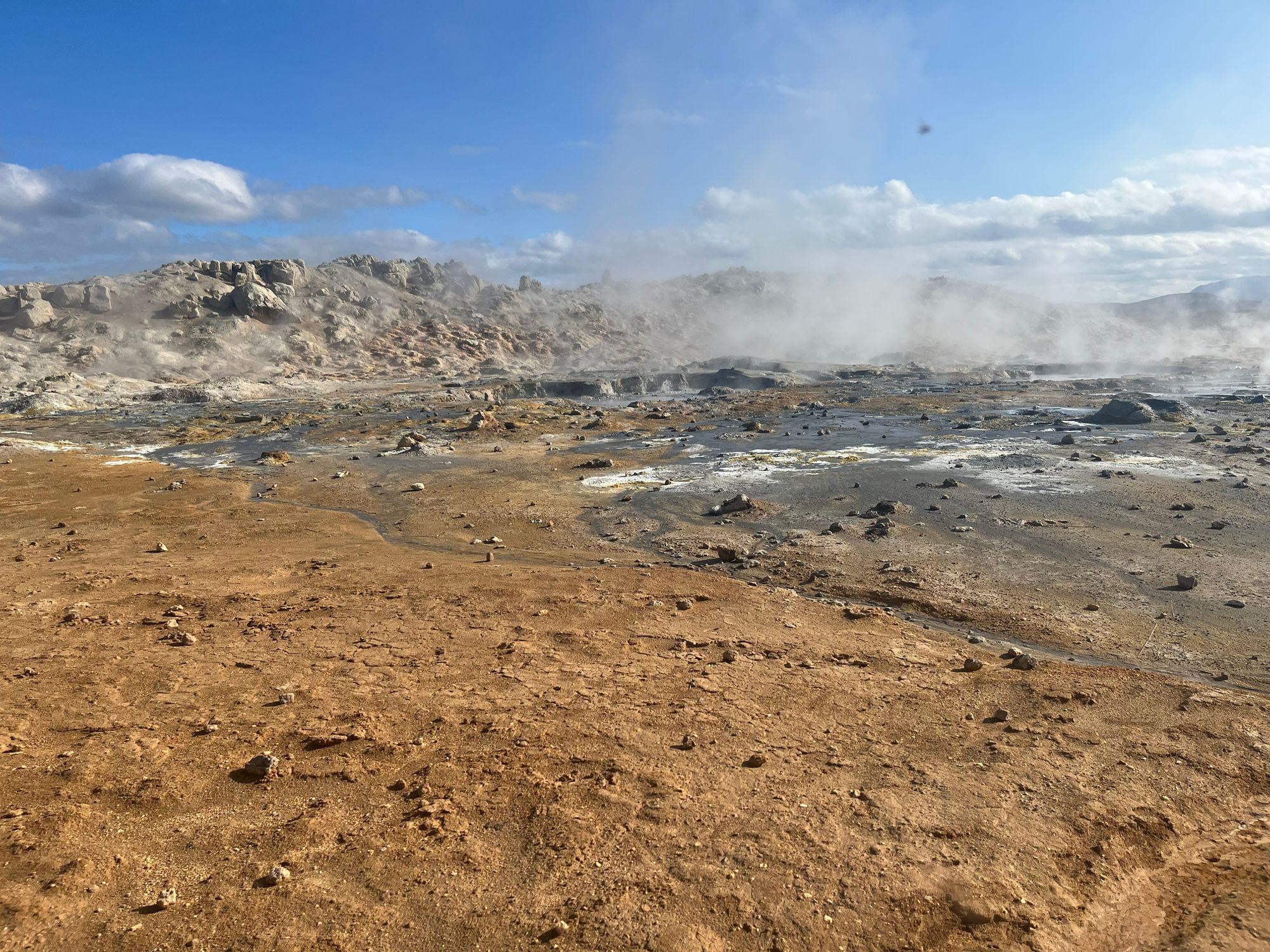
In the morning we sampled not one, but two coffee shops in Akureyri. It's the kind of city I wouldn't mind living in, if I decided to move northward. We also got in some souvenir shopping and sent a bunch of postcards to friends and other people who helped make this trip happen. Then we set out to the east.
Our first destination was Goðafoss, or "Waterfall of the Gods." The story is that after Iceland's parliament, the Alþingi, voted to change the country's religion from paganism to Christianity around the year 1000 CE, the head of the Alþingi headed home to the northern region of Iceland and cast all his idols of the Old Norse gods into this waterfall. So far it seems like if a waterfall is named after something, it's likely that thing died in it. In any case it's an impressive horseshoe of a waterfall, like a miniature Niagara Falls. When Mom and Dad spotted the spray from a distance they thought it might be smoke spewing from a volcano.
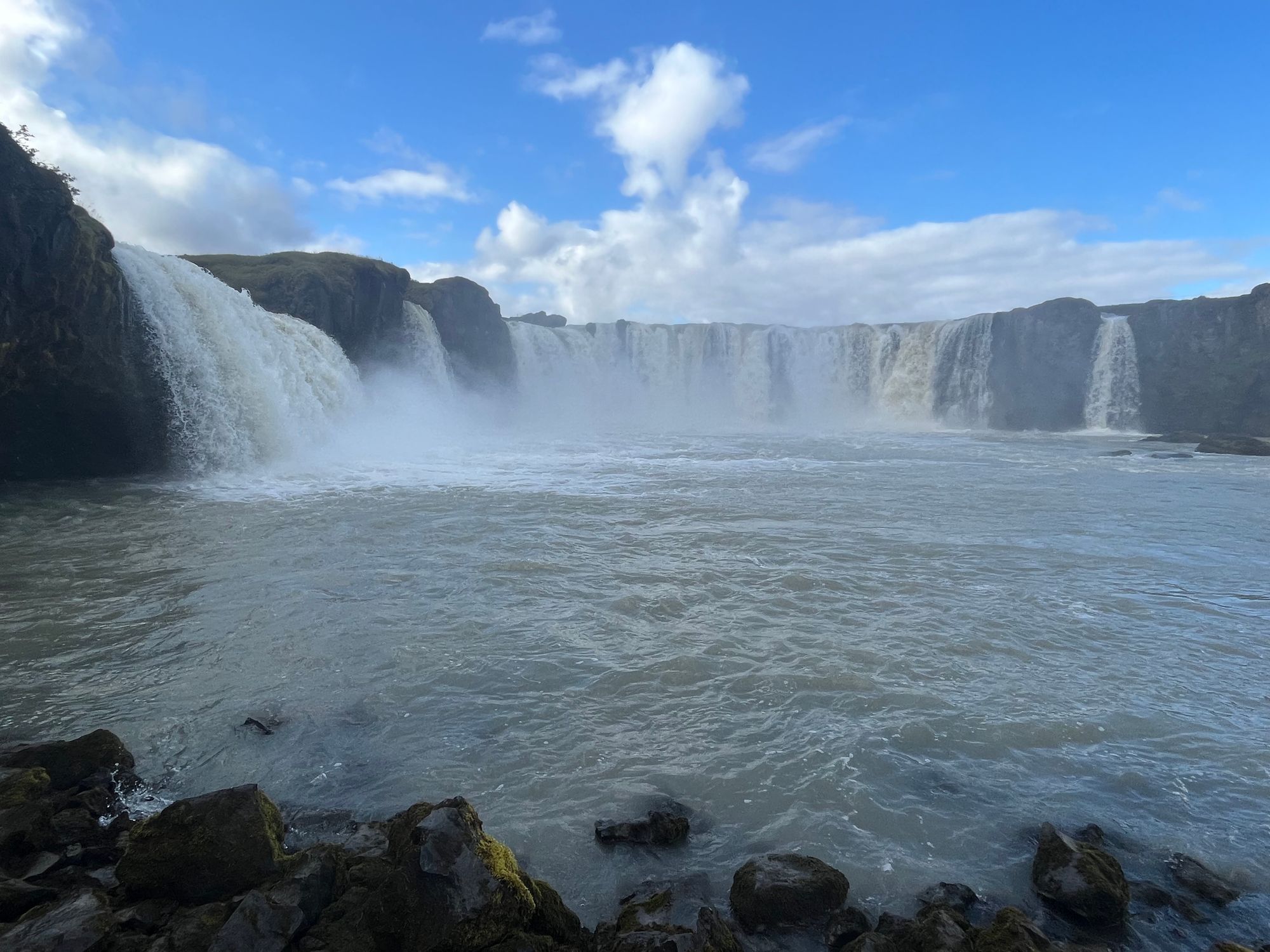
They were wrong in that case, but they soon got their wish as we entered the Mývatn area. Unfortunately volcanoes are not the only thing to be found in this place. The name Mývatn means "Midge Lake," and boy is it accurate! My guidebook claimed the midges only came out on windless summer days, and sadly for us this was the first windless day of our trip! We took a stroll around Skútustaðagígar, a series of "pseudo-craters" formed by volcano-related explosions of underground gas pockets, but found we were barely able to appreciate the surroundings thanks to the constant swarming of midges! Fortunately we found a shop across the road that sold personal mosquito netting for a fair price, and we wore them for the rest of our time in the area.
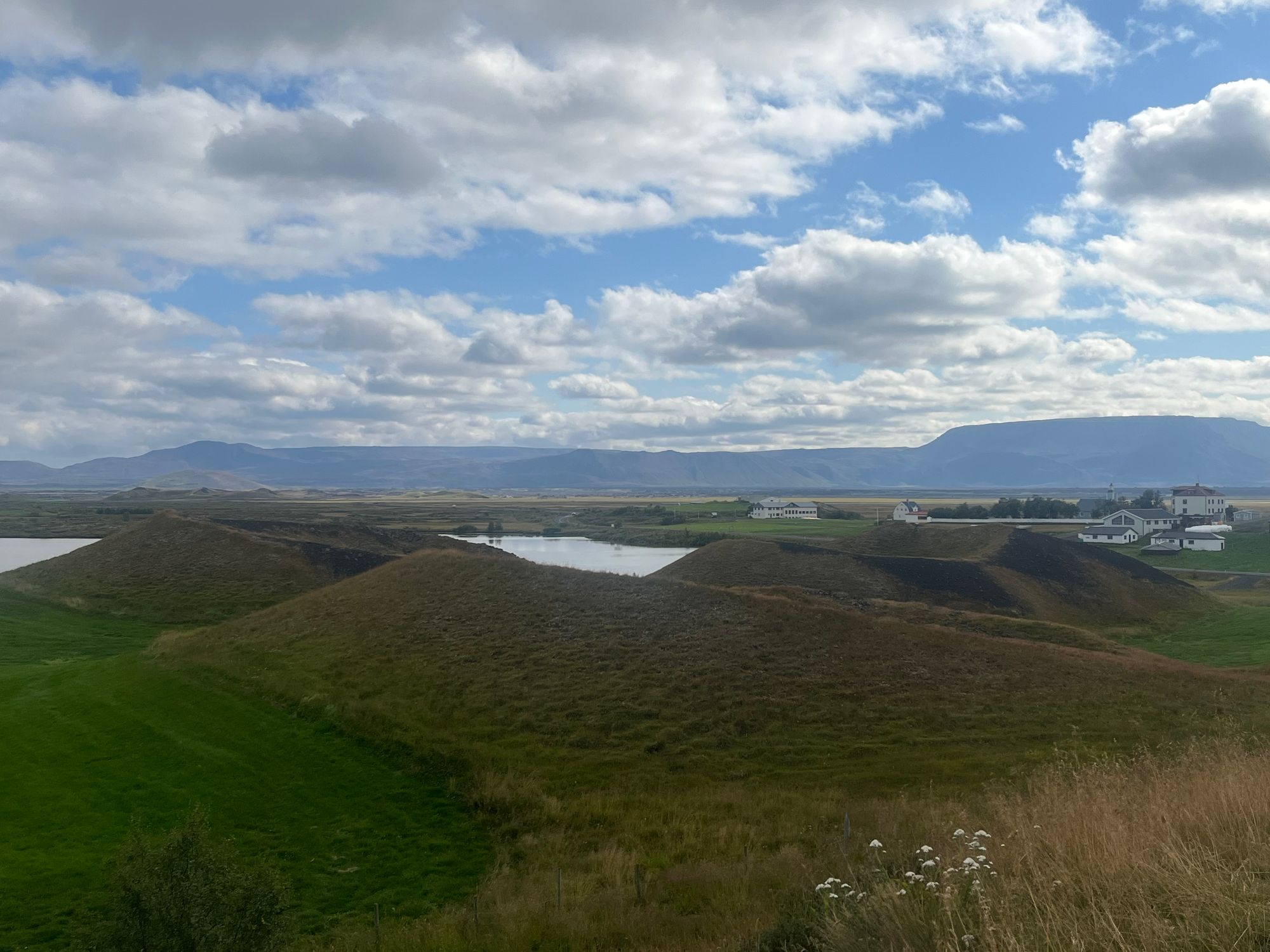
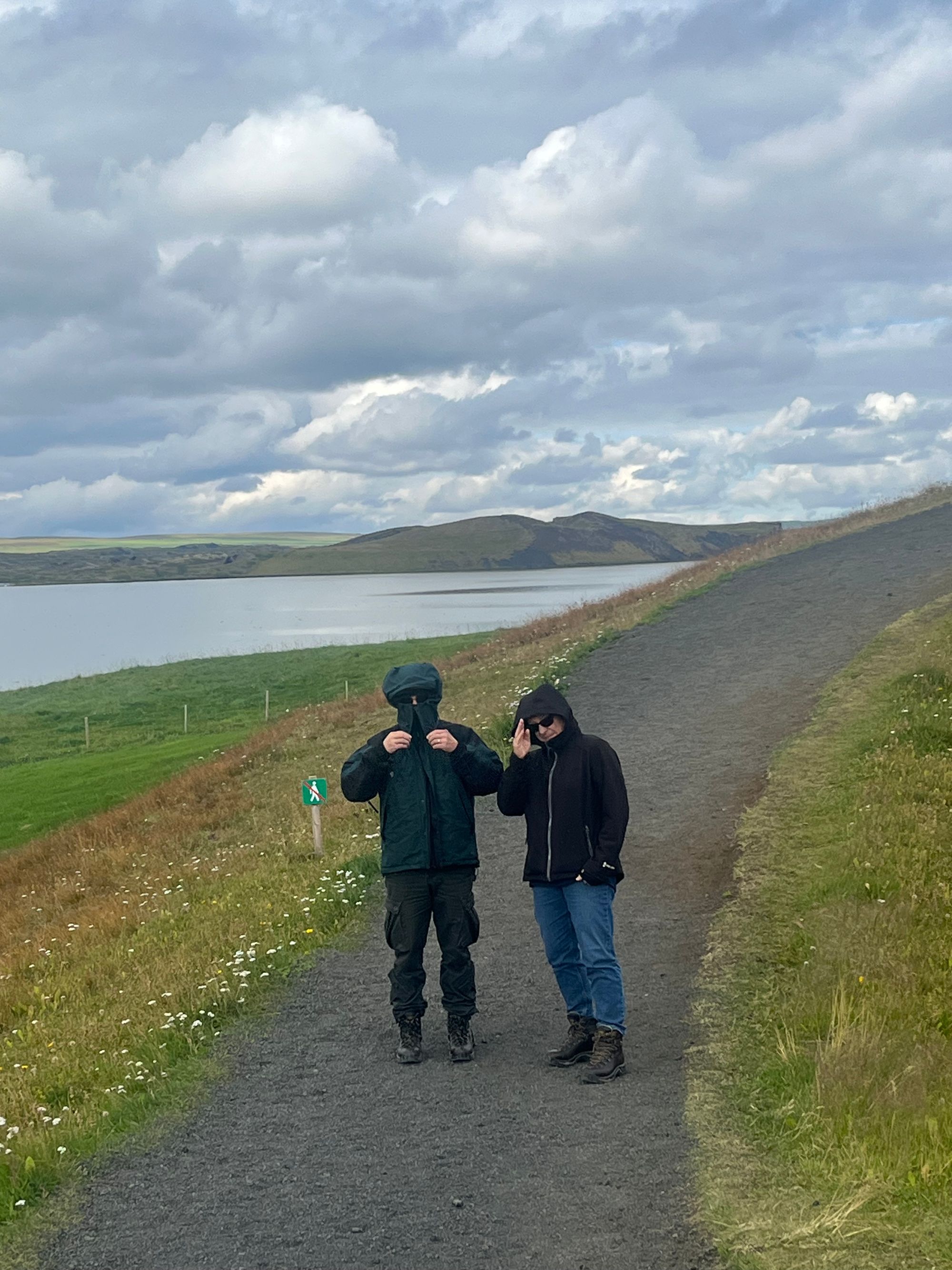
Mývatn is also known as a hot-spot for birders, but unfortunately for Mom we saw very few while we were in the area. Perhaps they've moved on for the season. Our next stop was Dimmuborgir, the "Black Fortress," a lava field with very interesting rock formations near Mývatn. In addition to interesting geology, it is also the home of the "Yule Lads," the 13 prankster trolls that spend the 13 days before Christmas terrorizing Icelanders and their livestock. They reportedly spend the summer resting, but the lava cave they call home is on display year round, as well as a chair formed of lava on which they reportedly sit.
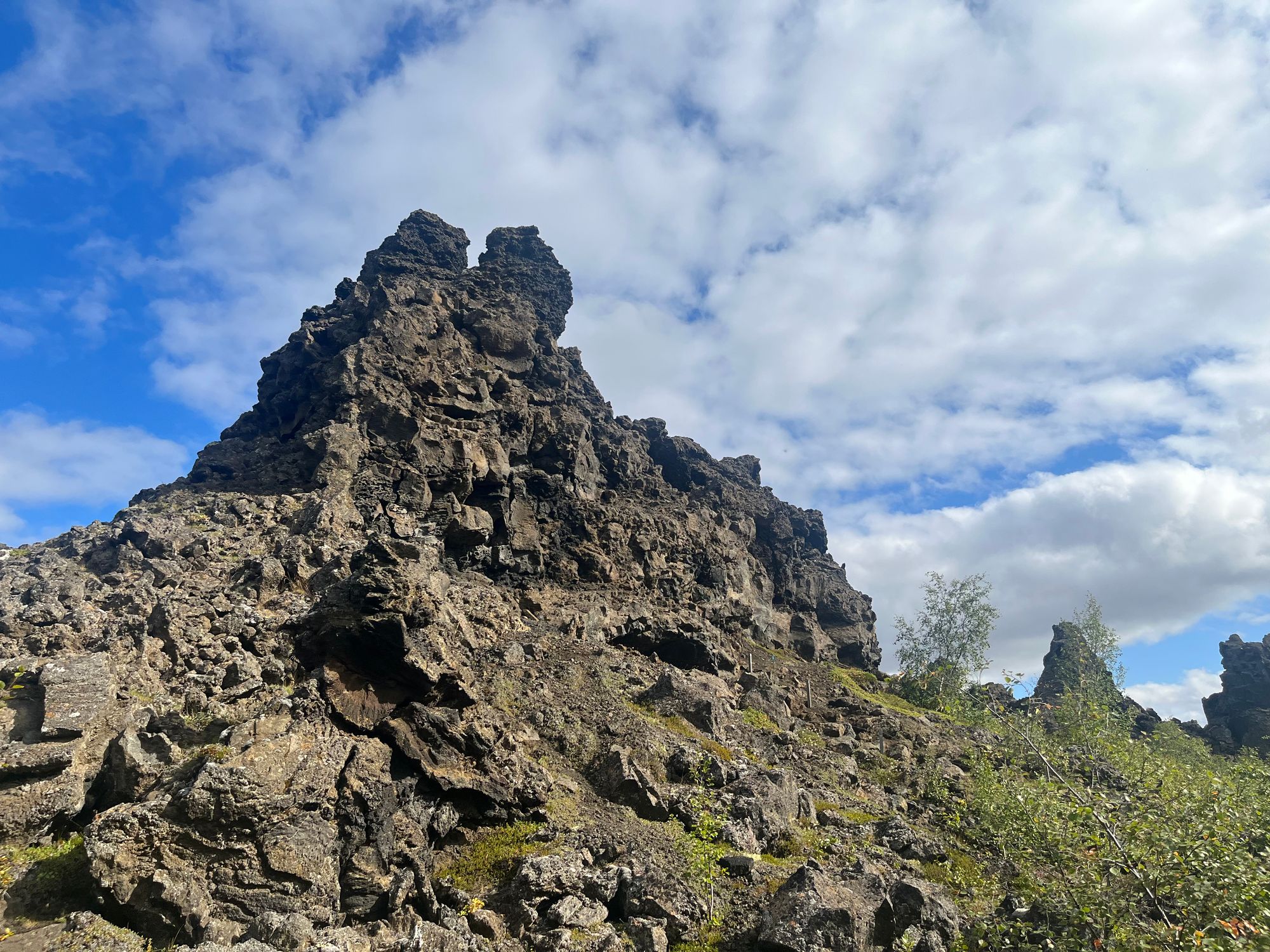
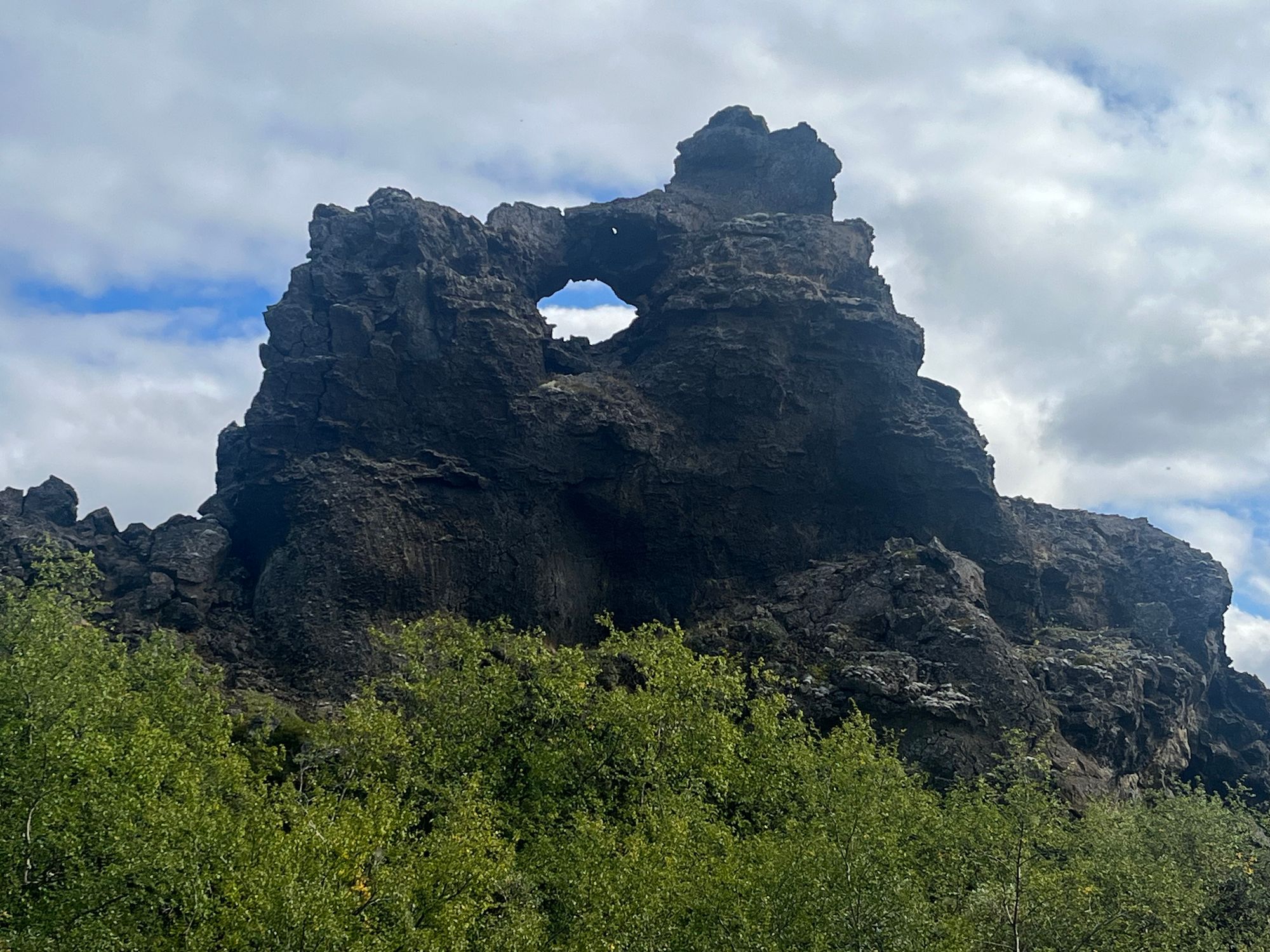
After some excellent fish and chips in the town of Reykjahlíð, we stopped by the cave Grjótagjá. This cave holds a geothermal pool which is now best known as the site where Game of Thrones' Jon Snow stopped knowing nothing about at least one particular topic. Unfortunately for fans, Grjótagjá was more likely used as a backdrop for a scene shot in a studio: While the pool was once a popular spot for local bathers, volcanic activity caused the temperature to rise just a little too high for human comfort. It was once higher, but it now rests around a scalding 45°C (113°F).
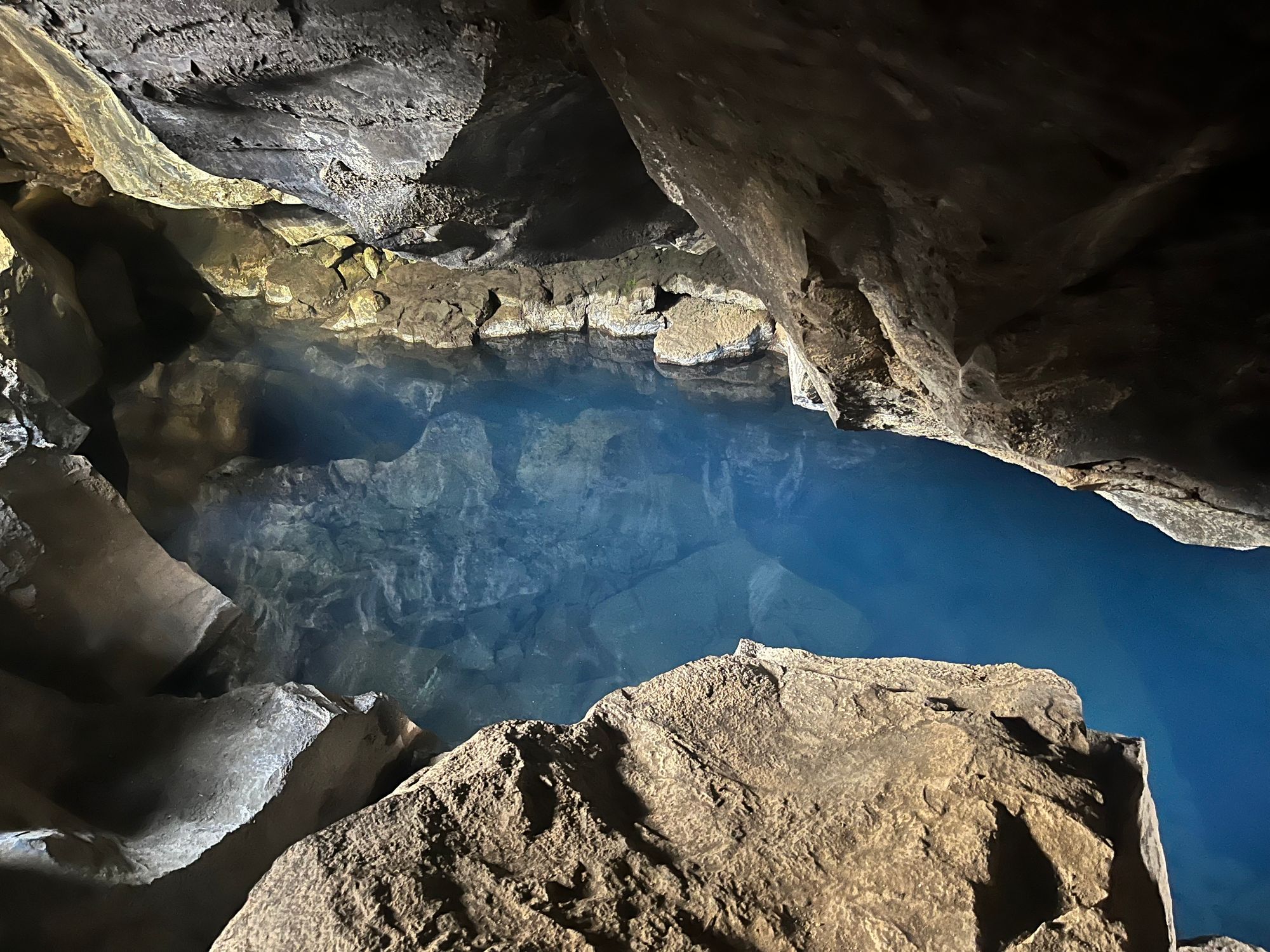
From Grjótagjá we moved on to the area known as Krafla on my map. This area is the center of geothermal activity around Mývatn, and is famous for the Mývatn Fires of 1724-1729 and the Krafla Fires of 1975-1984, when lava consumed the surrounding landscape for years at a time. Footage of the Krafla fires is featured in the documentary Fire of Love, which someone recommended to me recently. Now the area is home to a number of geothermal energy plants.
The most walkable area of Krafla is Hverir, where you can spot boiling mud pits and take a selfie disturbingly close to a steam vent piled with rocks. After a stroll among the sulphorus outpourings of the geothermal monster under our feet ("like a straw in the ocean," said Dad), we concluded it was worth the $10 parking fee.
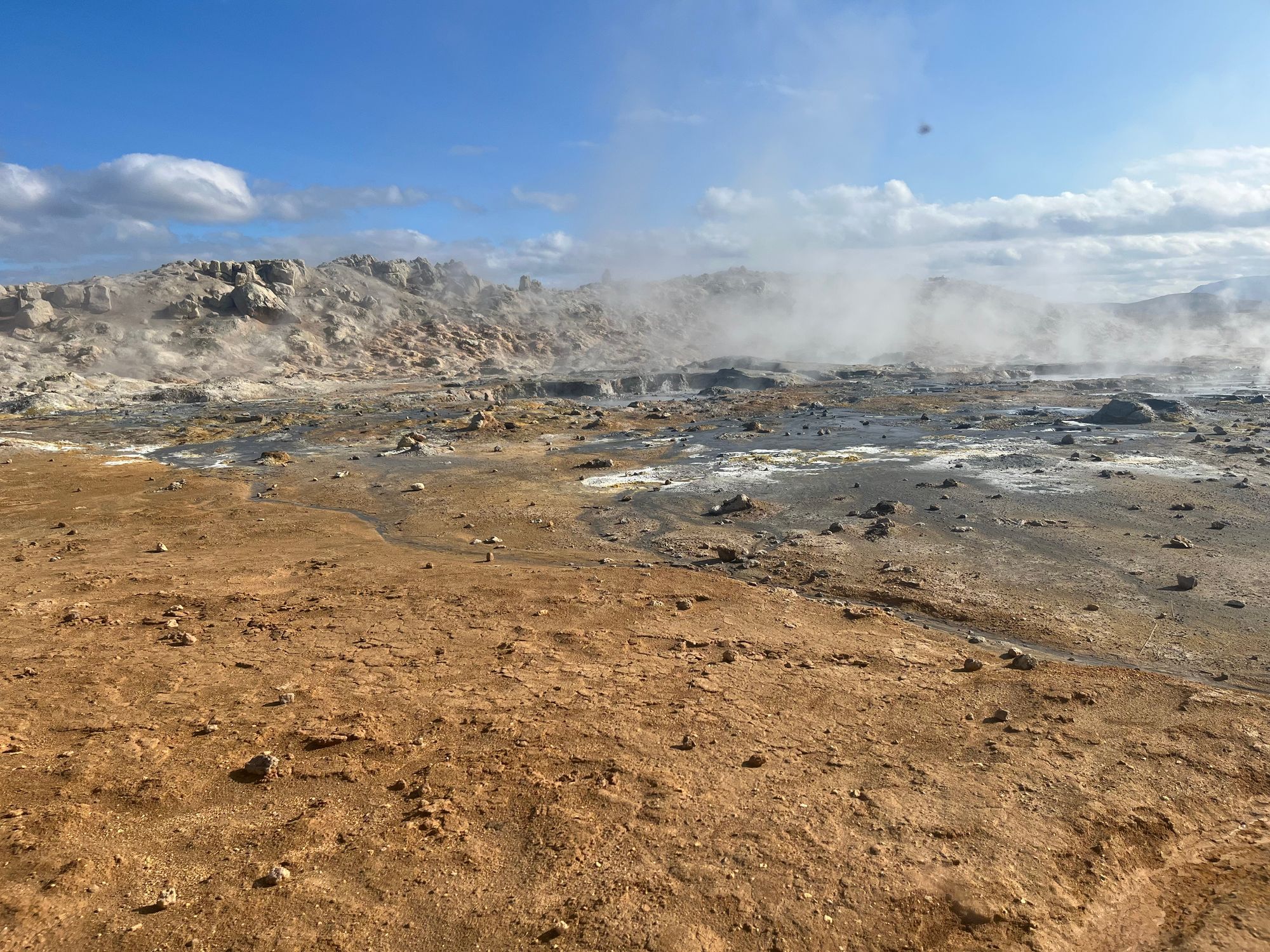
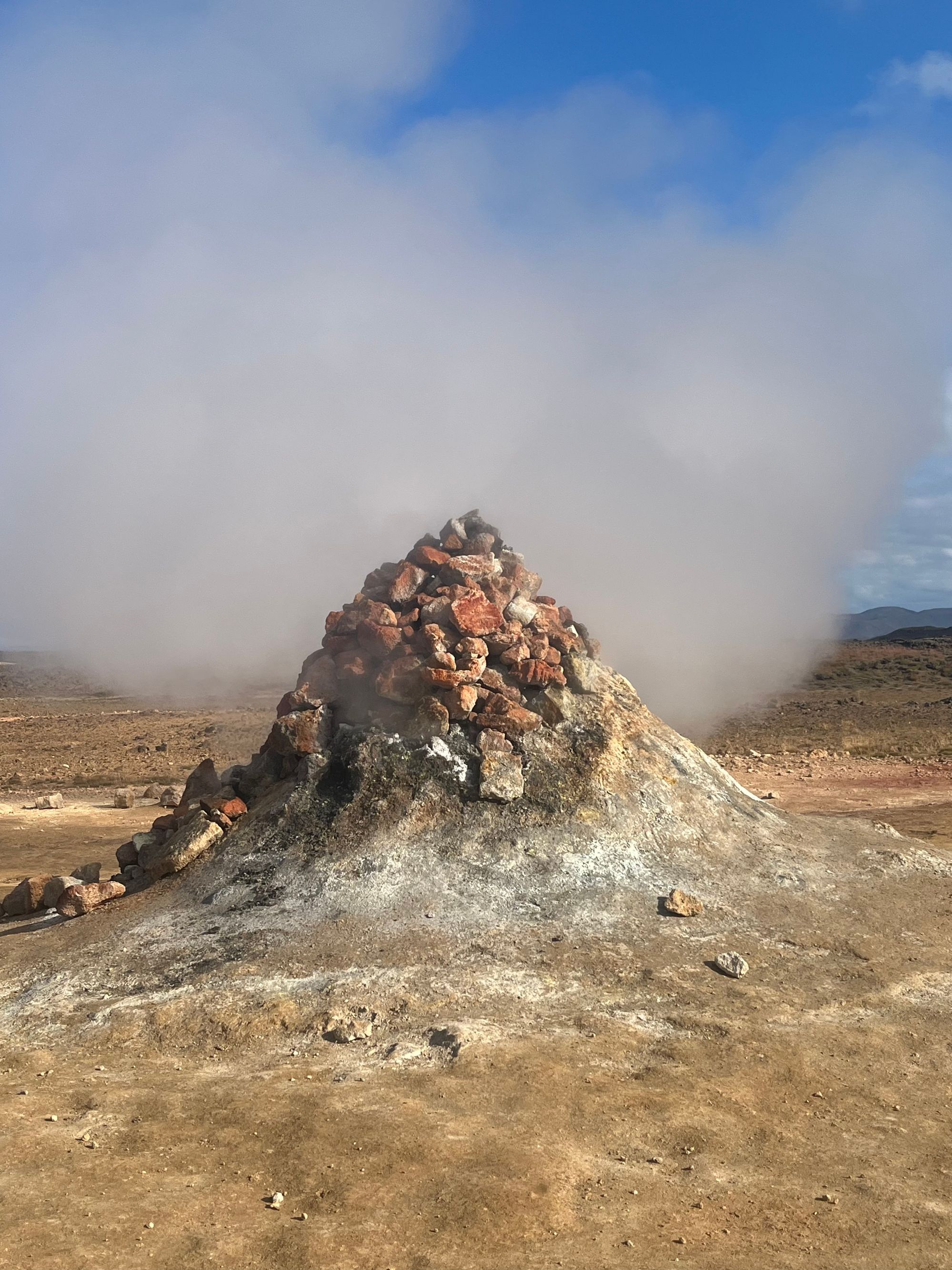
Our final stop on our volcanic tour was the Leirhnjúkur caldera, center of the 18th century eruption. A walk through a moonscape of lava frozen into an ocean of bumps led us up to the caldera itself, which holds a blue-green lake I wouldn't like to swim in. Pressed for time, we skipped the Krafla caldera and continued our way east.
Pointing our car north, we entered the Jökulsárgljúfur section of Vatnajökull National Park. The park comprises the Vatnajökull Glacier in the south and its runoff area of Jökulsárgljúfur in the north. Today, we visited Dettifoss, the "Collapsing Waterfall," which some sources claim to be the largest waterfall in Europe by volume, although it is unclear how they come by that measurement and Wikipedia disagrees. In any case, it was by far the most impressive waterfall I've ever seen. Walking toward the waterfall, it doesn't seem like something that big and that powerful can possibly be real. All photos I took of it did nothing to convey the reality of standing on the edge of a flood of glacial melt so strong it could easily destroy anything that got in its way.
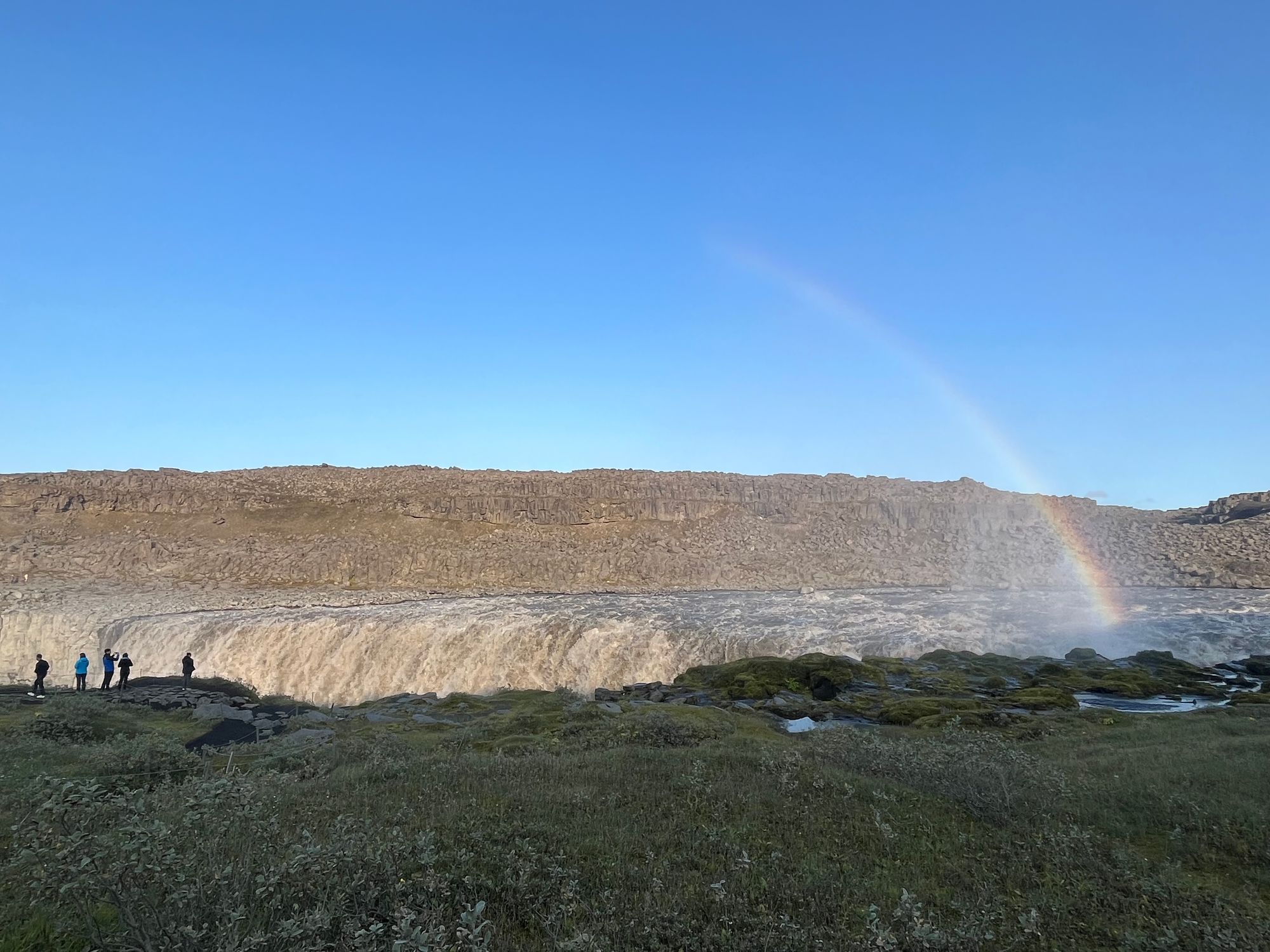
After checking into our guesthouse at the north end of the park, we grabbed dinner at the only restaurant within an hour's drive. With this meal, I've officially eaten all of the standards available at any restaurant in Iceland, minus the horrifically expensive lamb chops: hamburger, fish and chips, fish soup, lamb soup, hot dog, pizza, and ham and cheese sandwich. After four days in the country, I can't say I'm impressed by the variety of its cuisine. That said, the hamburger wasn't bad.
Our guesthouse was in a dark sky area, but unfortunately heavy cloudcover meant no stargazing for us. We settled in for a long rest instead.